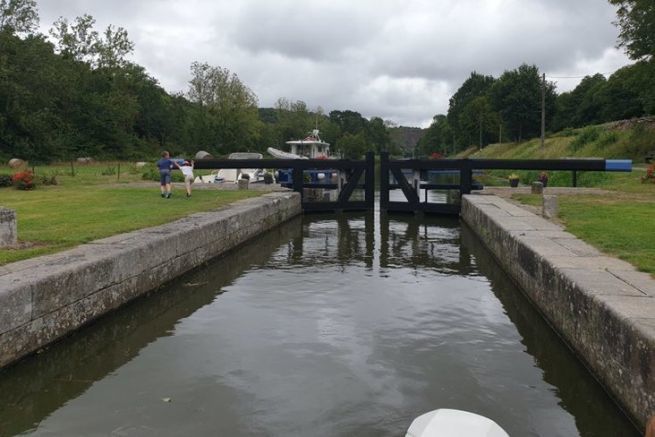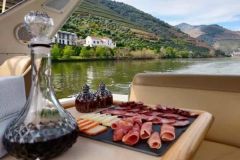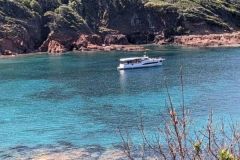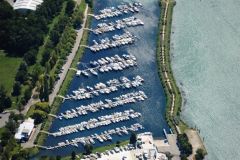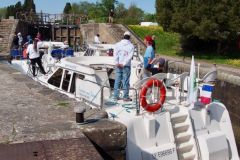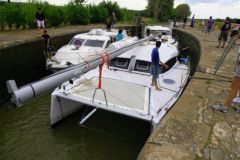The wide open spaces, the solitude of the open sea, the call of the distant continent, the meeting of another civilization... The motivations to take to the sea are legion, everyone will have their own and everyone will find their pleasure in the type of navigation that suits them, both coastal and offshore.
But ... we often forget the pleasures and technicalities of river navigation. For a long time considered as "drag", the 5 knots maximum speed - excuse 5 kilometers per hour, we are in inland waters, we don't talk about it in marine units - offers many pleasures to all water lovers, from the North to the South of the hexagon, everyone will be able to sometimes fish, sometimes bathe or, again, pass through multiple sluices.
Why go on the river?
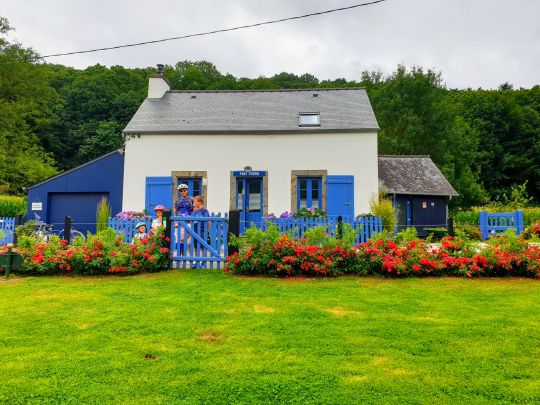
Because taking one's time has become a luxury, river navigation requires you to go slowly. Regulationally limited to 5 km/h on most of the VNF (Voies Navigables de France) network, the contemplative stroller will have the opportunity to look at the landscape and dream about the next port, the next lock. He will cross it by discussing with the lock keeper, rain or shine, the great restaurant in the area or the ideal place to refuel. Slow navigation is an opportunity to share, with family, friends or more simply as a couple, a moment suspended between sky and earth, fuel-saving in addition!
A precious advantage to freshwater navigation, it will allow you to link the useful to the pleasant, let's admit that it is more pleasant to take a calm ride on the water to rinse your engine after a season at sea, rather than watching it run with rinsing ears installed.
What technicality?
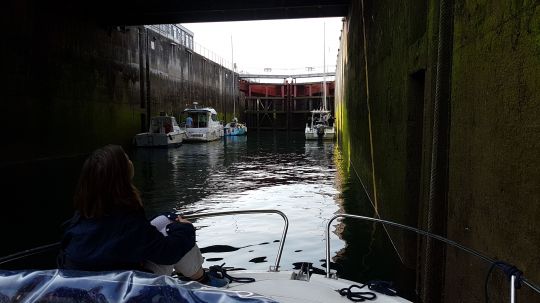
Inland water navigation requires the eponymous extension to your boat licence, and rightly so: Signalling, logic and rules are very different from those of the marine world. We will no longer speak of "port" or "starboard", but of shores, right or left as the case may be. We will no longer look out for channel 16, but we will join the channel indicated by the signage present throughout the route. It will not be necessary to note the tide times, but the lock hours - if any - of the locks. No need here for three 200 horsepower motors to move forward, a small 50 horsepower - or even an electric motor - will often suffice. Don't think that everything is easy and accessible on the rivers: going up the Rhine or the Loire requires real training and technical skills that some old sea wolves may be far from possessing!
How do you do it?

If you are the proud owner of a motorized or motorizable boat, all you have to do is to go to the river, canal or river in question, possibly - outside Brittany in fact - to obtain the French Waterways label and ... you will be able to sail from Calais to Marseille and discover the thousand riches of our beautiful territory!
If you don't have your own boat - or are allergic to fresh water - boat hire companies are legion along our rivers, Le Boat, to name but one, offers rentals from more than fifty resorts throughout the country, with rates starting at around 500 euros per week.
In summary
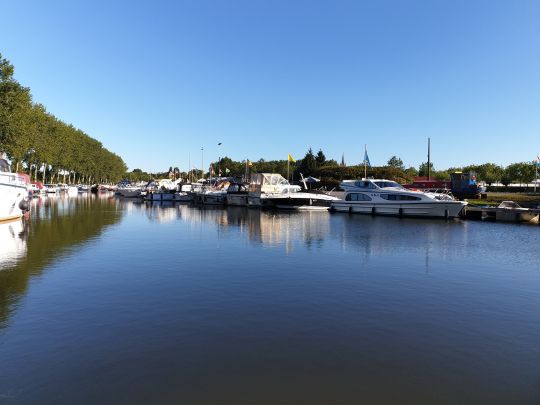
Inland navigation is a different approach to navigation, offering the opportunity to take time, change air and see scenery, something that few maritime navigations-beyond the coastlines-provide. The low speed makes this navigation - almost ecological, the fishermen will be able to put lines, the sportsmen will be able to practice kayak or paddle and the dreamers will have the leisure to rest, in the shade of the poplars of the Canal du Midi, under the ramparts of Dinan.
Sailing on a river means mixing the pleasures of navigation with those of life. What are you waiting for to try it?
